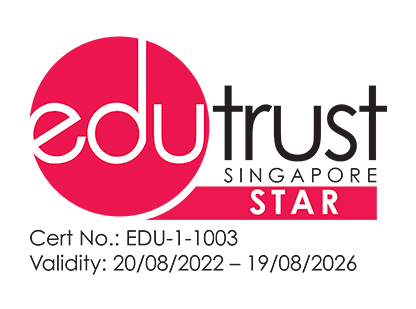Data Science and Data Analytics: Similar But Different

Data is a big deal in every industry. It is growing at an exponential rate and expected to become even bigger in the coming years. The capacity for global data storage is predicted to increase from 6.7 zettabytes in 2020 to 16 zettabytes in 2025.1 That means it will almost triple in five years!
The upsurge of data has led to the creation of big data. Big data refers to colossal volumes of data that can often be hard to manage, but unlocks huge opportunities when interpreted correctly. Though the disciplines of data science and data analytics have been around for quite some time, they have grown to become an increasingly critical part of business operations in the Digital Age.
At the Singapore Institute of Management (SIM), our Graduate Diploma in Data Science (E-Learning) caters to students who wish to pursue a career in data science and data analytics.

What is Data Science?
Data science is often used as an umbrella term for a variety of data-driven fields. It encompasses areas such as machine learning, natural language processing and artificial intelligence. It is an industry that is constantly evolving as more technological advancements are brought to life.
The primary goal of data science is to extract valuable information that is then used to construct actionable insights. But this doesn’t come without challenges. A huge problem of data science is that it is a niche field that many business owners find hard to comprehend. This can disrupt workflow and affect crucial business decisions.
Fortunately, this can be addressed by the implementation of a data science platform that integrates valuable insights, often backed by an experienced professional. Data scientists are experts at data visualisation and communication, which aid in presenting complex data to decision makers. Ultimately, this will help data scientists and business owners work better together and make decisions based on shared organisational goals.
What is Data Analytics?
Data analytics is a field within data science that focuses on extracting valuable insights. From those insights, actionable solutions can be developed to tackle problems head-on. It also incorporates different tools and techniques used to perform data analysis and manage data.
By employing the use of data analytics, businesses can easily spot trends and foreshadow problems. Essentially, this paves the way for better decision-making and problem-solving. But there are billions of emails, messages and machine-generated events that occur daily worldwide,2 making it difficult to thoroughly analyse and interpret the data.
Data analysts overcome this issue by relying on four different types of data analytics to sort through all that data:
1. Descriptive analytics - Solutions are determined by comparing historical data alongside current data to identify certain patterns or trends.
2. Diagnostic analytics - Data is used to understand the reasoning behind each pattern or trend.
3. Predictive analytics - As the name suggests, data from past performances is studied and used to forecast future outcomes.
4. Prescriptive analytics - After coming up with solutions, data analysts test their theory and recommend methods to solve a problem.

Data Science vs Data Analytics
The terms “data science” and “data analytics” are often used interchangeably because both are heavily focused on big data. However, the way each discipline works with big data is where they differ, especially in terms of the specialised skill sets needed and job opportunities available in the market.
1. Data science skills
One of the primary skills that a data scientist must have is the ability to perform a statistical analysis. As someone in charge of identifying the source of a problem, you must be able to infer information from the data given. Only then can you provide a diagnosis of the problem.
A data scientist should also possess adequate programming skills. Understanding different programming languages, like R, Python and Java, is the very first step in performing basic tasks.
Finally, a data scientist should have extensive knowledge and experience in using analytical tools such as SAS, Apache Spark and NLTK. These tools are designed to speed up the process of extracting data and converting it into useful information.
2. Data analytics skills
Generally, the same skills are needed in data analytics since it is a field under data science. But there are specific skills that every data analyst must master, with the first one being data visualisation. You must understand how to convert numerical data into easily understandable visuals and present them to those outside the data science industry.
Apart from that, a data analyst should also possess data cleaning skills. This refers to the ability to compile data from multiple sources and handle missing or inconsistent data that might affect the outcome of an analysis.
An absolute must-have is Structured Query Language (SQL) skills. This is the industry-standard database language used to handle large amounts of data. A data analyst should be proficient in this to properly manage and store data or build database structures.

Are the Job Responsibilities Different?
As you move through your career, you’ll start to realise that both fields have different job scopes and responsibilities.
Under the umbrella of data science, you have the opportunity to work as any of the following:
1. Machine learning scientist
This revolves around developing algorithms that help create recommendations for users, similar to how Quora determines relevant answers to questions and how IBM Watson is used to assist in cancer treatment.3
2. Data engineer
As a data engineer, you’ll be in charge of converting raw data into a bulk of meaningful insights that will then be used to come up with competitive strategies.
3. Statistician
Statisticians are in charge of crunching numbers and testing hypotheses. The data collected from the results can be used to predict future outcomes, which aid in decision-making.
Narrowing it down further to data analytics, you have the opportunity to pursue a career such as:
1. Medical and healthcare analyst
Hospitals keep a large amount of patient data. You’ll be responsible for evaluating this data and providing solutions to better the healthcare system.
2. Business intelligence analyst
This job consists of three parts: breaking down data, interpreting it, and sharing the findings. Ultimately, the goal is to ensure business owners make data-driven decisions.
3. Operations research analyst
Essentially, you’ll be tasked with gathering data from multiple sources. You’ll then have to make sense of the data, identify discrepancies and determine solutions to them.
Preparing for a Data-Driven Future
These are just some of the careers available in this exciting field, and reality shows that there is a growing demand for data scientists and data analysts across various industries.
SIM's Graduate Diploma in Data Science (E-Learning) helps students understand how these disciplines are distinctive and equips them with the skills needed to face the evolving modern world of technology. Students will also learn how to gather and interpret complex data, and how to communicate it effectively to key decision makers.
Build your future on data today. Speak to one of our Student Advisors now!
Reference
1 Statista, https://www.statista.com/statistics/1185900/worldwide-datasphere-storage-capacity-installed-base/
2 Neuralt, https://www.neuralt.com/the-6-vs-of-big-data-neural-technologies/
3 Builtin, https://builtin.com/artificial-intelligence/machine-learning-examples-applications





